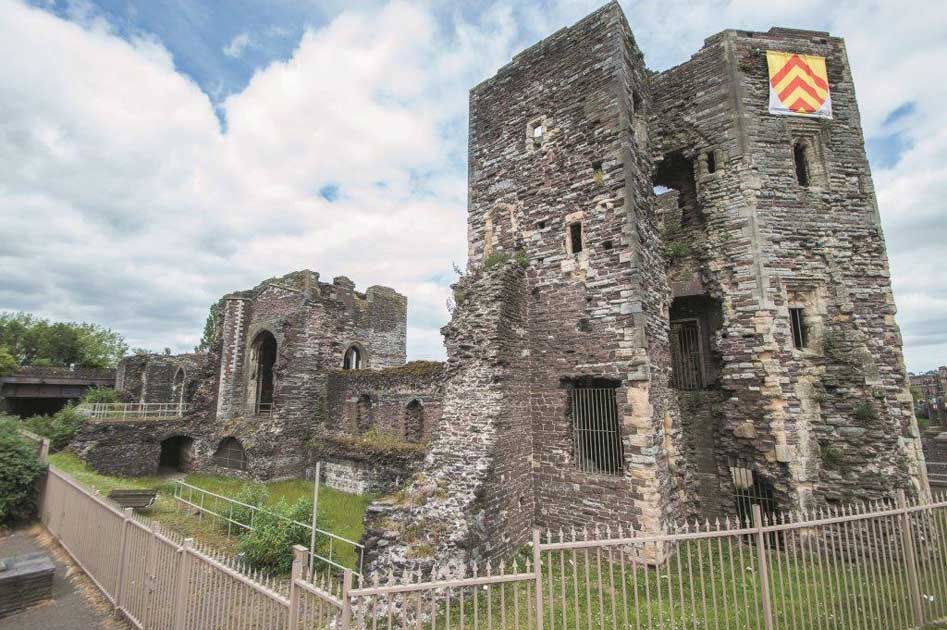Newport Castle Monmouthshire

Newport Castle Monmouthshire Details
Newport Castle, frontage of C14 courtyard castle of the Audleys ruined by C18
- Closest To: Newport
- Access: No Access
- Grid Reference: ST312884
Newport Castle Monmouthshire is a ruined courtyard castle of the 14th century overlooking the River Usk. It was built as the second castle in the town, and remained in use into the 16th century, almost all of its life being as an administrative centre, although it was sacked during Glyndwr’s revolt in 1402, and it did see action in the Civil War.
What remains is fenced off for safety reasons, but is clearly visible from outside the fence, and from the footpath across the road bridge. This is the triple towered waterfront side, with polygonal towers at each end, and a tall square tower between which contained the water gate. Less comprehensible are the remains of the buildings within the courtyard to the rear of this frontage, consisting of a great hall at the north end, chapel and chambers in the centre, and kitchens along the south wall. There were two minor gates, one north-facing and one south-facing, neither of which had a substantial defence beyond the wet moat that enclosed the entire courtyard, that filled with water at high tide. The north wall was set at an angle that caused the courtyard to taper towards the west, and the couth-eastern corner was cut off by an angle, leaving the courtyard five-sided. However, it is only the east front that survives today, the rest has disappeared below development.
The first castle was probably a motte and bailey, and which is believed to have been about halfway between the new castle and the cathedral, although the presence of the King’s Hill east of the Cathedral would perhaps appear more logical. This was founded at the end of the 11th century, and was attacked by the Welsh repeatedly, during which time it was held by the various earls of Gloucester – including Prince John in the reign of Richard I. It became crown property after the last Clare earl of Gloucester was killed in Scotland at Bannockburn. After Edward II granted it to Hugh Despenser, it was sacked by Roger Mortimer, and then passed to Hugh Audley, who started building a new castle by the river, where it could control trade and traffic up the Usk. It remained incomplete since Hugh died in 1347, his daughter the heiress did in 1349, and her eldest surviving son Hugh Stafford was only 13 at the time. When he was old enough he went to war in France and did not return until after 1370 – and when he died in 1386 his three surviving sons were all underage, the eldest having died before him. Thomas then died aged 24 in 1392, William died aged 20 in 1395, and Edmund the youngest came of age in 1397 – but was killed at the Battle of Shrewsbury in 1403, his son Humphrey only a year old. In 1405, Newport became crown property and was repaired, to serve as a prison for Owen Tudor in 1460, and as a residence for his son Jasper Tudor after 1485. It was briefly seized by Henry VIII, but was already in disrepair by that date. A Civil War garrison of 50 men did stay here in 1645, but the castle was taken in 1648, and allowed to fall into ruin.
Become a supporter of my work to access a more detailed history